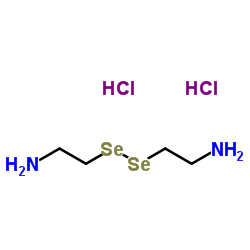Effect of antiviral substances on hepatitis A virus replication in vitro.
E Biziagos, J M Crance, J Passagot, R Deloince
Index: J. Med. Virol. 22(1) , 57-66, (1987)
Full Text: HTML
Abstract
The effect of protamine, atropine, selenocystamine, taxifolin, and catechin on the infectivity and antigenicity of the cell culture-adapted hepatitis A virus (HAV) strain CF 53 was studied. The toxicity on uninfected PLC/PRF/5 cells was examined for each antiviral compound by morphological and biochemical methods, in order to determine concentrations without cytotoxic effect. At these concentrations, protamine and taxifolin, added to infected cells for a 15-day period, caused concentration-dependent reductions in the infectivity and antigenicity of HAV. Atropine also caused a concentration-dependent reduction of HAV infectivity but did not affect the antigenicity of the virus. At the highest concentration used, 50 micrograms/ml of protamine, 59 micrograms/ml of taxifolin, and 50 micrograms/ml of atropine, the infectious viral titer reduction was 1.56, 0.77, and 0.68 log10, respectively. Selenocystamine and catechin had no effect on HAV replication.
Related Compounds
| Structure | Name/CAS No. | Molecular Formula | Articles |
|---|---|---|---|
 |
SELENOCYSTAMINE DIHYDROCHLORIDE
CAS:3542-13-0 |
C4H14Cl2N2Se2 |
|
Pulse radiolysis studies on reactions of hydroxyl radicals w...
2008-04-10 [J. Phys. Chem. B 112(14) , 4441-6, (2008)] |
|
Oxidation of glutathione and superoxide generation by inorga...
2008-09-01 [Biofactors 31(1) , 55-66, (2007)] |
|
Separation of organoselenium compounds and their electrochem...
2004-07-01 [Anal. Bioanal. Chem 379(5-6) , 770-6, (2004)] |
|
Selenium functionalized intraocular lenses inhibit posterior...
2009-11-01 [Exp. Eye Res. 89(5) , 728-34, (2009)] |
|
Cytolysis of human erythrocytes by a covalent antibody-selen...
1995-12-01 [Free Radic. Biol. Med. 19(6) , 713-24, (1995)] |